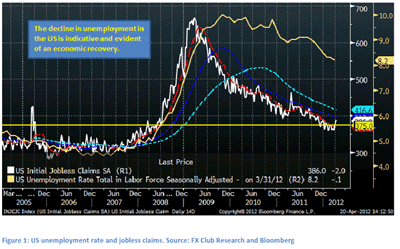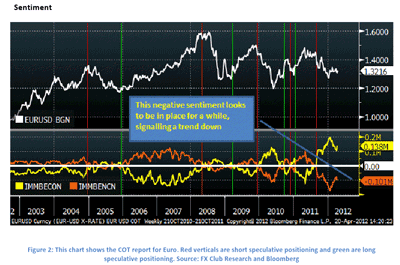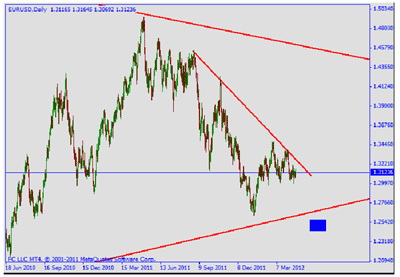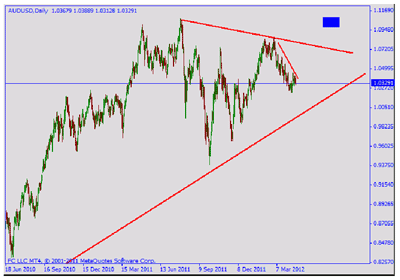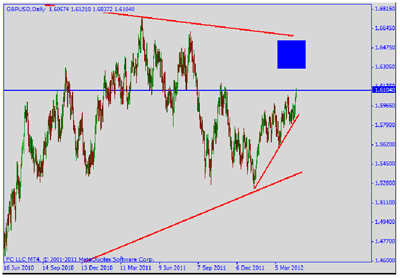There are a few defining factors for the forex market through the balance of 2012. The essential questions are: which central bank is going to extend its monetary easing policies first, the European Central Bank or the Federal Reserve? Monetary easing is simply the process of keeping interest rate low (in the case of the Federal Reserve where the fed funds rate currently resides at 0-0.25%), and it can also be accomplished by buying securities on the opening market by the central bank (known as Quantitative Easing) in the US.
It is becoming more evident that the situation in Europe will continue to be recessionary well into the year 2012. On the flip side, the US unemployment rate has declined to 8.2% and continues on a downtrend. Simply put, between the two continents, Europe is in much worse shape with its high unemployment and fiscal austerity compared to a United States that has been slowly but steadily growing. This makes it more likely that the ECB will stay more accommodative to the weaker European Union than the Fed will with a stronger US economy.
We find that a reliable way of measuring sentiment and long-term trends on the Euro are through the CFTC’s Commitment of Traders report. The chart above shows the Euro futures contract traded on the CME with the net speculative positioning on the bottom (orange is the net speculative position and yellow is the net commercial hedgers’ position). We mark with a vertical line when the speculators flip net long or short; the red vertical is when speculators flip to net short and green signals when they flip net long. The result is a pretty good representation of how EUR/USD is going to trend while large speculators are positioned long (trend up) or short (trend down).
|pagebreak|The current situation is a steep short position that looks like it is going to reinforce a downtrend in the Euro. Whenever this sort of large consensus of Euro sentiment is positioned to the downside, large hedge funds and CTAs are generally following a well-established trend.
Technically, the daily chart backs up our hypothesis of a lower Euro because of the large triangle consolidation that we are currently in. The closest support line comes in at the 1.28 handle, and we are expecting the formation to continue with a lower Euro toward 1.28.
Australian Dollar
Consolidations aren’t unique to Euro, as the Aussie is exhibiting a similar consolidatory phase. The chart below is telling us that the strong uptrend in place since 2009 is firmly in place, but we just need to back and fill before continuing higher past 1.09.
The way the daily candles are retracing back and forth in a range tells us that the market is relatively balanced in this large triangle. The best way to play this market from a larger perspective is to look for long trades near 1.02 and look for a return to the center of the range, which is 1.04, and even 1.0630 where the majority of consolidation takes place.
British Pound
Long-term consolidations are in all of the major pairs it seems and Cable is right in the middle of its range. Generally speaking, there is an uptrend in place from the winter of 2011 but it would not be surprising if this pair retraced somewhere towards 1.55, near trendline support.
That would set up a good base for gains back toward the target area shown in the chart below at 1.6450. This scenario largely fits in with the lower economic prospects of Europe and a stronger US (higher US Dollar). Toward the end of 2012 though, this chart along with the one for AUD/USD points to long-term gains.

